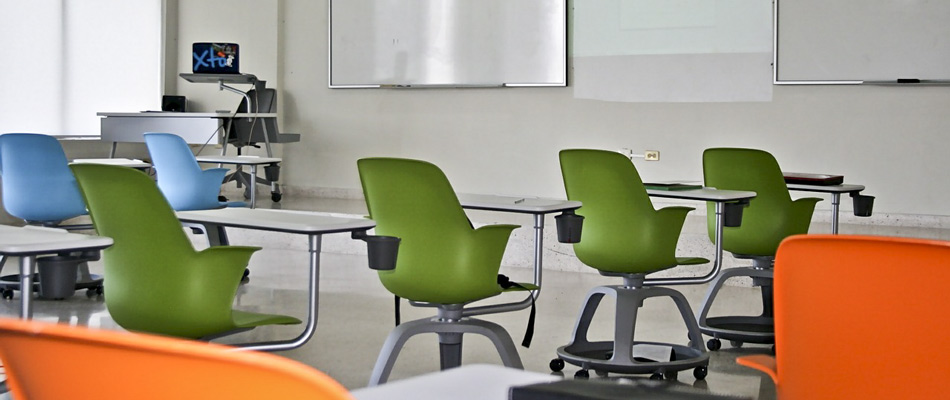Mike Lundstrom is the Manager of Maintenance and Facilities at the Wild Rose School Division in central Alberta.
It is not the job of school facilities and maintenance staff to work directly with students, but student engagement can be a benefit for facilities projects.
Mike Lundstrom is the Manager of Maintenance and Facilities at the Wild Rose School Division in Alberta. The central Alberta division has 19 schools and around 5,000 students.
Overseeing all the facilities is a full workload for Lundstrom’s team, but taking a bit of time to educate the students on energy efficiency is an occupational bonus.
“I work in an educational environment,” says Lundstrom, who has been working in the division for 15 years.
“Our department gets to bring something to the kids.”
One opportunity is directly talking to classrooms about the scale of a school’s systems and the costs to heat or power a facility. Lundstrom has been invited on a few occasions to speak to students and give behind-the-scenes tours.
“I love seeing the looks on kids’ faces when you show them the boilers.”
These tours offer the students more than a look into mechanical and electrical systems. Lundstrom says he can show students a variety of options for occupations and give them a glimpse of the bigger picture right within their school.
Lundstrom has also shared with classrooms the raw numbers, including a facility’s utility and costs data. He has displayed the Building Management System (‘BMS”) graphical interface on an interactive whiteboard and then showed the direct impacts of turning off lights or pumps.
The next steps for Lundstrom’s team are to explore permanent utility metering displays. One school already has a gateway device on the electrical meter for real-time electricity consumption data. A display would have the ability to show spikes and changes as lights go on or off within the school.
Lundstrom has set up a few of the division’s administrators with read-only access to the BMS. The division is already paying for the service, so there are no extra costs to share the data. Now colleagues who work directly with teachers and students can use the data in ways that complement the curriculum and teaching methods.
“I’m curious to see if they’ll come up with anything to bring the data in front of the kids,” says Lundstrom.
“They got the good ideas.”
Digital utility displays will be considered in future renewable energy projects. The Alberta government recently announced funding for solar panels in schools throughout the province, and the Wild Rose School Division is expecting an investment. Lundstrom says the investment will offer “more of an educational benefit.”
A digital display with a dashboard can show the solar panels’ current production, historical production and the cost or greenhouse gas savings in an easy-to-understand equivalent, such as number of trees.
“It shows kids that alternative electrical generation is a reality. It is visible to them.”
For facility managers, the added advantage of educating students can benefit proposed projects also.
“Education definitely makes new projects a lot more appealing because it isn’t just about the building then. It adds an educational component and not just a building component.”
Lundstrom recognizes that student engagement is not a major priority on his long to-do list, but he intends to continue to find ways to incorporate student education into existing and future projects.
“I see an opportunity to incorporate this into more facilities.”
